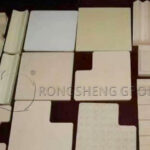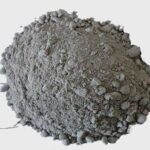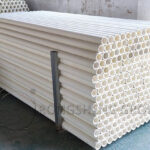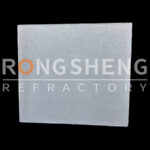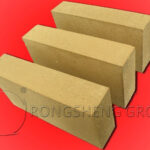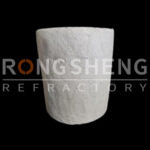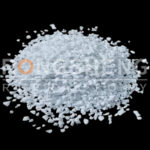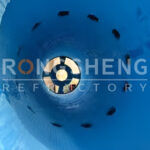Modern Ceramic Kiln Refractories Manufacturer
In modern ceramic kilns, as important structural materials such as beams and columns, it is required to have good high-temperature resistance, thermal shock resistance, and creep resistance. As a shed, it is mainly required not to pollute ceramic products, and secondly, it is required to have good creep resistance, thermal shock resistance, and high strength properties. As a manufacturer of high-quality refractory materials for ceramic kilns, the Rongsheng manufacturer provides reliable refractory lining materials for ceramic kiln refractory linings.
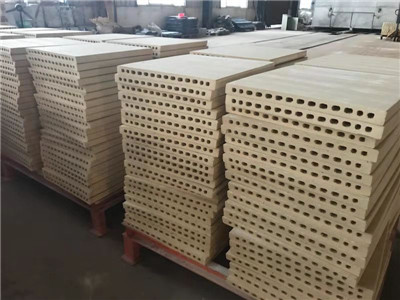
Refractory Materials for Modern Ceramic Kilns
Therefore, silicon carbide is selected for the production of important supporting materials such as beams and columns due to its high strength, high thermal conductivity, and high thermal shock resistance. However, silicon carbide may cause some transition metal ions to undergo oxidation-reduction reactions and contaminate ceramics. Generally, oxide materials are not prone to oxidation-reduction reactions. Therefore, cordierite-mullite is selected for the production of low-stress kiln furniture materials such as slabs and backing plates for low-temperature fast-fired kilns due to its good thermal shock resistance. The mullite-corundum material is selected as the kiln furniture material for high-temperature ceramic kilns because of its good high-temperature resistance and creeps resistance.
A kiln or stove refers to a stove used to burn ceramic objects and sculptures or to fuse enamel on the surface of metal objects. It is generally made of bricks and stones. It can be made into various sizes according to needs and can be operated with combustible gas, oil, or electricity. Electric kilns are easier to control the temperature than kilns that use combustible gas and oil, but some potters and sculptors believe that the temperature of electric kilns rises too fast. (When the temperature in the furnace chamber is measured with a pyrometer (PYROMETER) or a temperature measuring cone (PYROMETRIC CONES), it can be seen through a peephole.)
Heavy Refractory Materials for Ceramic Kilns
The earliest refractory materials used in ceramic kilns were mainly heavy refractory bricks. With the continuous improvement of light insulation refractory materials, heavy bricks are basically used in the refractory lining of tunnel kilns, track kilns, and other kilns of building sanitary ceramics. Unless there are special needs, it is no longer used. Heavy refractory materials are still used in corrosion-resistant kilns, such as frit kilns, shuttle kilns for pigments, and rotary kilns. The purpose is to avoid slag drop and good corrosion resistance. Especially in frit kilns, where the materials are in direct contact with refractory materials, heavy refractory materials should be carefully selected, especially in terms of material, density, and thermal conductivity. The characteristics of this type of kiln are just the opposite of those of tunnel kilns and track kilns. Generally, heavy-duty refractory materials are in the inner layer, while medium-quality refractory materials and insulation materials are in the middle and outer layers.
The heavy refractory materials used in ceramic kilns are similar to those in the glass industry, mainly acid refractory bricks, neutral refractory bricks, and some special refractory bricks. The basis for selecting bricks is mainly determined by the firing temperature of the kiln, the atmosphere, the corrosiveness of the molten material, and the acidity and alkalinity.
What are the Insulation Materials Used in Ceramic Kilns?
The classification of ceramic kilns is very wide. There are differences in shape, heating method, and firing temperature, but they require a lot of insulation materials. Mullite insulation bricks are needed on the inner wall and backing of the hot surface of the kiln. Because of low thermal conductivity, high-temperature resistance, good stability, fine size, it can be processed into various shapes. Therefore, it is suitable for the thermal insulation of the roof, body, and bottom of industrial kilns, and the appearance is beautiful.
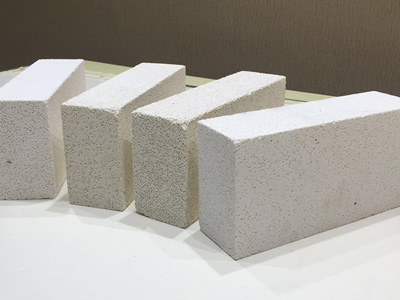
(1) Mullite insulation brick
Lightweight mullite bricks, also known as mullite lightweight insulation bricks, are high-quality high-purity refractory powders. According to the specific gravity of the product, it is a lightweight mullite product synthesized by adding organic compound fillers, vacuum extrusion molding, and high-temperature sintering. It is suitable for the hot surface lining and backing of various industrial furnaces in metallurgy, petrochemical, building materials, ceramics, machinery, and other industries. It has the advantages of low thermal conductivity, low heat capacity, high purity, and low impurity content.
(2) Thermal insulation cotton
The thermal insulation cotton is white in color and regular in size. It integrates the functions of fire resistance, heat insulation, and heat preservation, and does not contain any binder. It can maintain good tensile strength, toughness, and fiber structure when used in a neutral and oxidizing atmosphere. The product has low heat capacity, low thermal conductivity, excellent thermal stability, no chalking within the use temperature, and excellent sound absorption and heat insulation properties. It is suitable for industrial kiln wall lining, backing material, high-temperature pipe insulation, kiln masonry expansion joint, furnace door, etc.
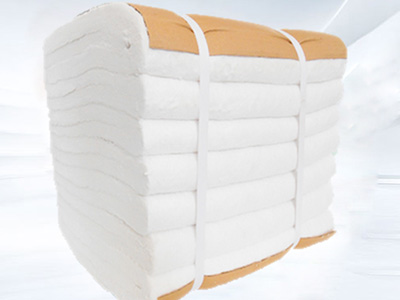
(3) Ceramic fiber module
The ceramic fiber module is made of a ceramic fiber needle-punched blanket of corresponding material and processed on a special machine according to the structure and size of the fiber component. Its elasticity can compensate for the deformation of the furnace shell so that there is no gap between the components. The elastic fiber blanket can resist mechanical external forces. Because of its lightweight, it has less heat storage when used as a thermal insulation material, and low thermal conductivity brings a high energy-saving effect and has the ability to resist thermal shock.
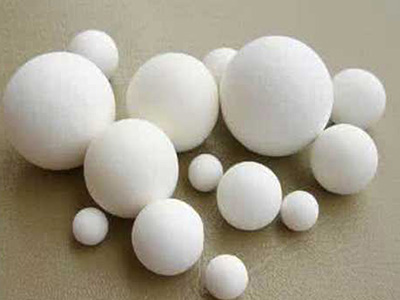
(4) Corundum heat storage refractory ball
Refractory balls are made of industrial alumina and refractory kaolin as main raw materials through scientific formula, forming, and high-temperature calcination. Mainly play the role of heat storage. The air volume entering the regenerator passes through the heat transfer of the regenerator, and the temperature rises sharply to hundreds of degrees or even thousands of degrees. The spherical heat storage body has the advantages of good thermal shock stability, large heat storage, high strength, easy cleaning, and reusability.
Rongsheng Refractory Materials for Sale for Ceramic Kilns
Rongsheng is an experienced refractory material manufacturer and sales company. Rongsheng’s refractory products have been sold to more than 60 countries around the world, for example, Russia, South Africa, Kazakhstan, Philippines, Chile, Malaysia, Uzbekistan, Indonesia, Vietnam, Kuwait, Turkey, Zambia, Peru, Mexico, Qatar, etc. To purchase high-quality refractory materials for ceramic kilns, please choose Rongsheng refractory manufacturers. Because the refractory lining materials are purchased directly from refractory manufacturers, the price is cheap and the quality is guaranteed. The refractory manufacturers with guaranteed strength in the company can also guarantee the after-sales service of their products. Rongsheng sells refractory materials for ceramic kilns, and we look forward to cooperating with you.
